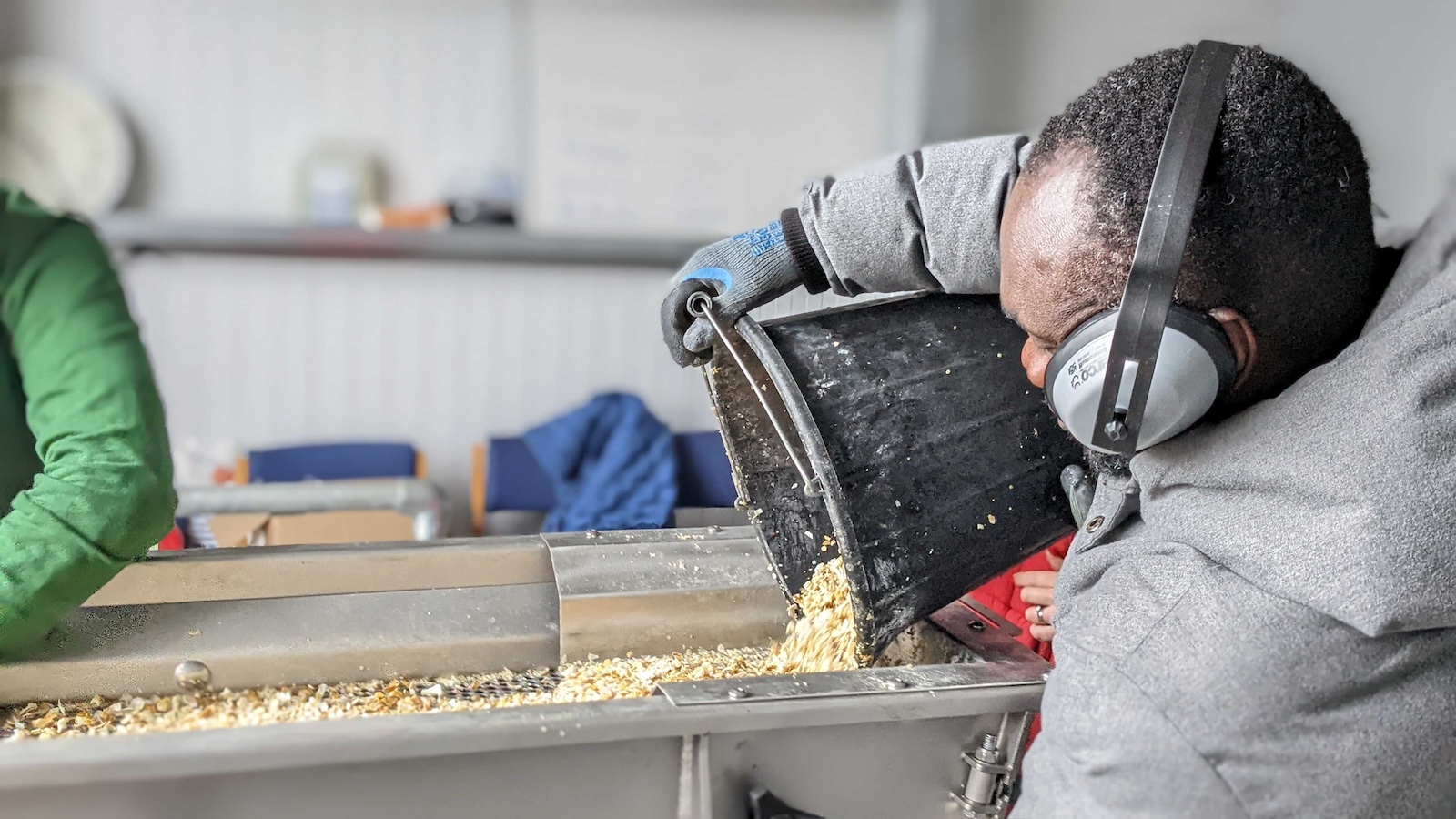Town of Magna, Utah, was as soon as the house of a main coal-fired energy plant that supplied electrical energy for Rio Tinto’s huge copper mine subsequent door. However in 2019, the corporate shuttered the final of the 4 coal models, opting as an alternative to energy its mining operations with wind and photo voltaic vitality.
Now plans are underway to open a totally different form of industrial facility within the former coal neighborhood, one that may use waste rocks from the Kennecott copper mine to assist make low-carbon concrete.
On Tuesday, Terra CO2 Expertise was picked to obtain a $52.6 million federal grant to construct a new manufacturing plant simply west of Salt Lake Metropolis. The corporate has devised a methodology that turns frequent minerals into components that may assist substitute Portland cement — a key part in concrete, and one of the vital carbon-intensive supplies within the world.
“Most of what we’re targeted on is lowering the carbon footprint of cement and concrete,” Invoice Yearsley, CEO of Terra CO2, advised Canary Media. “However it is a distinctive state of affairs on the Kennecott mine, as a result of it’s additionally a chance to repurpose some mine tailings … and supply some actual environmental advantages.”
The Utah facility is certainly one of 14 tasks provisionally chosen this week to obtain $428 million in whole awards from the U.S. Division of Power’s Workplace of Manufacturing and Power Provide Chains. The initiative, which is funded by the Bipartisan Infrastructure Regulation, goals to speed up clear vitality manufacturing in U.S. communities with decommissioned coal services. Officers stated the tasks are anticipated to create over 1,900 high-quality jobs throughout a dozen states.
G. Lyon Pictures Inc
“The transition to America’s clear vitality future is being formed by communities full of the precious expertise and expertise that comes from powering our nation for many years,” U.S. Power Secretary Jennifer Granholm stated in a Tuesday information launch.
The chosen tasks contain small and medium-sized companies which are targeted on 5 key provide chains: low-carbon supplies, grid parts, batteries, clear energy technology, and energy-efficiency merchandise.
Together with Terra CO2, two different concrete-related initiatives are up for the federal cost-sharing awards. City Mining Industries may get $37 million to develop vegetation in Baltimore and Indiantown, Florida, that convert recycled glass into cement components. Furno Supplies could obtain $20 million to construct a Chicago facility that turns industrial waste supplies into low-carbon cement.
The announcement arrives because the world’s building business wrestles with how you can substitute low cost, ample Portland cement — which, because it occurs, was developed 200 years in the past this week, when British bricklayer Joseph Aspdin cooked up the primary batches of the clay-and-limestone fusion in his kitchen.
Cement manufacturing is liable for round 8 % of human-caused carbon dioxide emissions yearly. That’s partly as a result of cement is made in scorching gas-fired kilns, but additionally as a result of the limestone used to make it releases CO2 when burned.
Terra CO2 is working to curb these emissions by creating supplementary cementitious supplies, or SCMs, that may partly displace Portland cement utilized in concrete.

The business already makes use of tens of millions of tons of SCMs yearly, each to cut back its merchandise’ carbon footprint and to cost-effectively strengthen the fabric. However most SCMs at the moment are comprised of fly ash and slag, byproducts from coal-fired energy vegetation and metal mills. As extra of these services shut down in the USA, pushed by international competitors and native local weather insurance policies, these supplies have gotten tougher and costlier to get.
Primarily based in Golden, Colorado, Terra CO2 makes its SCM from a number of silicate rocks, together with granite, basalt, alluvial sand and gravel, and clay-sand mixtures. The corporate places these rocks in a reactor that heats them to their melting level, yielding glassy powders that may substitute 25 to 40 % of the Portland cement wanted for various mixes of concrete.
Yearsley estimated that each ton of cement changed by his firm’s SCM ends in 70 % decrease CO2 emissions, in comparison with pure Portland cement.
Thus far, Terra CO2 has lined up about $160 million in commitments from undertaking finance companions to fund commercial-scale tasks, and it’s raised about $61 million in enterprise capital, together with from the mining large Rio Tinto and Invoice Gates–based Breakthrough Power Ventures.
The startup is about to start work on its first industrial facility within the Dallas-Fort Price space in Texas. The undertaking is anticipated to interrupt floor in January 2025 and start delivery out supplies by late summer time 2026, Yearsley stated. The power might be able to producing as much as 240,000 metric tons of SCM per yr when accomplished, or sufficient to serve roughly half of the native metropolitan market.

Yearsley stated that Terra CO2 was already contemplating constructing a second plant close to Salt Lake Metropolis when the federal funding alternative got here alongside. The corporate was working with Rio Tinto to determine how you can use the Kennecott copper-mine tailings as a uncooked materials feedstock for SCMs. Then they noticed that the Division of Power recognized Magna as a coal neighborhood, making it eligible for a cost-sharing grant.
“The celebrities aligned, which doesn’t all the time occur for early-stage corporations,” Yearsley stated. “The grant is vital as a result of it’ll assist us deploy quicker on a bigger scale, and it’ll enhance the economics,” although he famous that Terra CO2’s merchandise are already cost-competitive “earlier than inexperienced incentives.”
Yearsley wouldn’t disclose the anticipated whole price of the Utah facility, which can even be able to producing as much as 240,000 metric tons of SCM per yr. However Terra CO2 has already lined up monetary commitments that ought to cowl a lot of the undertaking’s remaining capital prices, he famous.
“If we are able to have local weather options which are cost-competitive for these bigger-ticket objects like concrete, that’s vital,” he stated.





